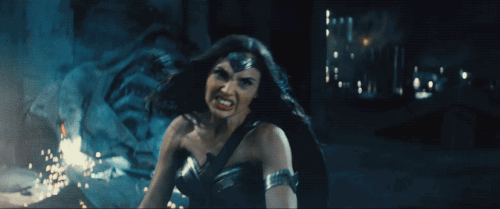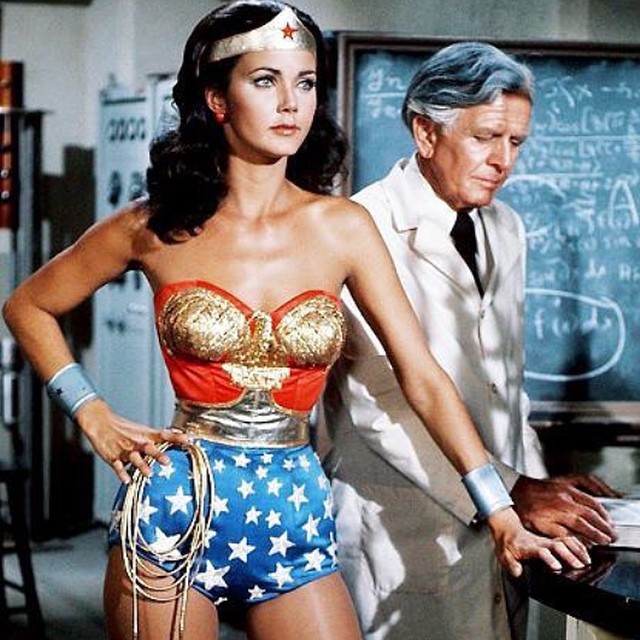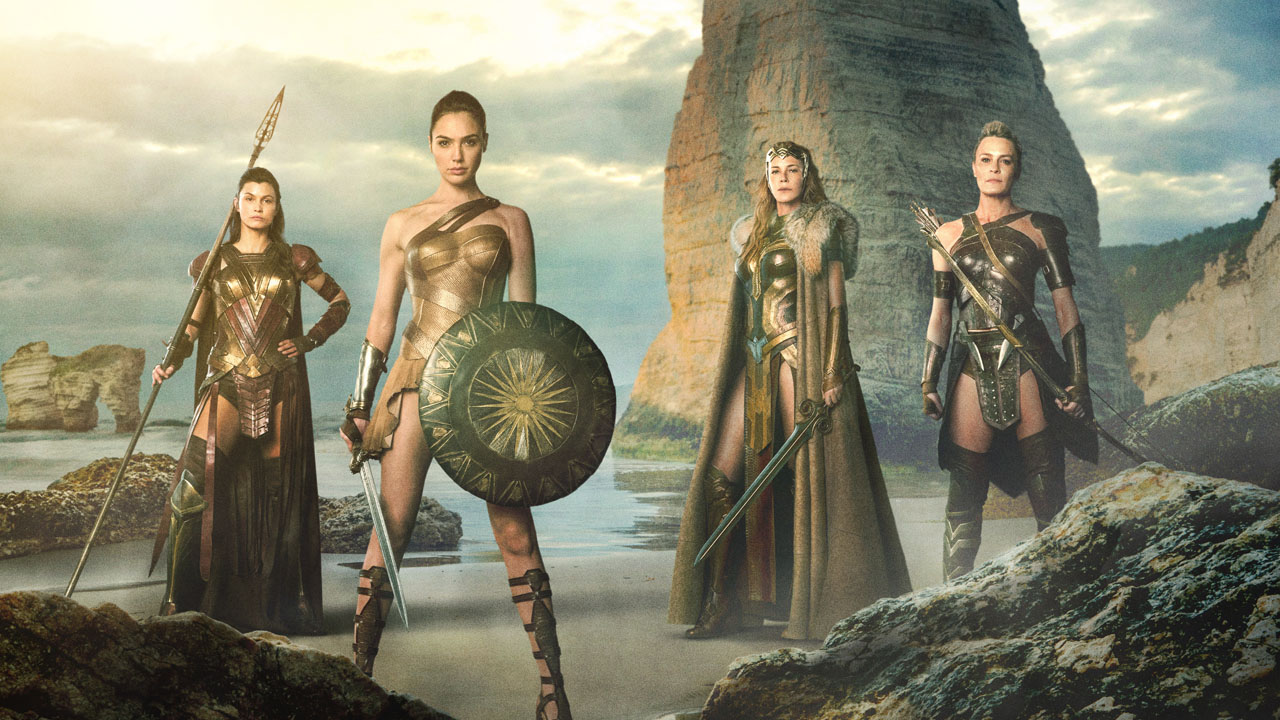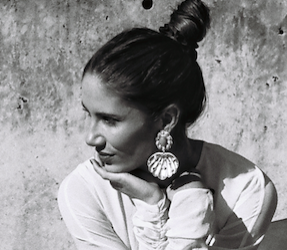News feed

Credit: Getty Images
For Wonder Woman actress Gal Gadot, it was particularly important for a woman to be at the helm of story of a girl becoming a woman. And this sentiment would be felt even stronger as she introduces another little daughter into the world. The film wrapped shooting in the States last year under female director Patty Jenkins. “All my life I’ve been working with male directors which I’ve really enjoyed,” Gadot told EW. “And I’m lucky in that I’ve worked with men who have a lot of respect for women. But working with a woman is a different experience. It feels like the communication is different. We talk about emotions. With Patty, it’s a thing now, we communicate with our eyes. She doesn’t need to say a thing. If I’m hurt, she feels the pain. It’s a whole different connection that I have with her. She’s also brilliant, she’s bright, she’s fierce, she’s sharp. She knows exactly what she wants Wonder Woman to be.”
A female director is one thing but lets bring it back home for one second and take a look into why this film not only needed Jenkins but also should have been given the screen treatment 75 years ago. When Wonder Woman was created as a comic book character in 1941, she came at a time when the Second World War was ravaging Europe. At home in Australia, in a bid to alleviate the men who were needed on the frontline, there was a call for young women to contribute to the war effort as part of the armed services. With deaths on the acute rise – and in the words of Bonnie Tyler – the world really did “need a hero” but never did they think their next pop culture icon would come in the form of a woman.
While we’ve seen countless Batmans in Michael Keaton, Val Kilmer, George Clooney, Christian Bale and now Ben Affleck, it’s been an arduous wait for the super heroine in feminist stars. So why has it taken 75 years to bring her to silver screen life?

A female superhero in the making
Back then, amidst the bloodied war, one man did see a need for a new comic hero; one who fought with love, compassion and empathy instead of the violence our men were experiencing on the front line. His name was William Moulton Marston, an American psychologist from Massachusetts. He, along with his wife, Elizabeth, (who served as a great influence in Wonder Woman’s creation), believed there was great educational potential in comic books. It was Elizabeth who convinced her husband to make this new superhero a female.
According to several interviews, Marston became obsessed with the model of a powerful and liberated woman, one who could stand next to The Green Lantern, Batman and Superman. He sold the idea to DC Comics citing, “Not even girls want to be girls so long as our feminine archetypes lack force, strength and power, “ he told The American Scholar in 1943. “The obvious remedy is to create a feminine character with all the strength of Superman plus all the allure of a good and beautiful woman.” After all, it was a telling sign of the times. In fact, in Australia, The Women’s Royal Naval Service, Australian Women’s Army Service and Women’s Auxiliary Australia Air force were being formed as a means of helping the men who had to fight overseas. Wonder Woman was not only a contrasting character to the violence abroad, she was also a representation of a woman’s (calm) entrance into the war. WW in a time of WW2 was the making-love-not-war antidote we needed. (Fact: Wonder Woman’s name was initially penned as “Suprema”.)

Credit: Instagram @lord.veil

Credit: Instagram @lyndacarterfanpage
Her plight for the green light
While this is the first wonder woman film to hit cinemas, it’s certainly not the first time Hollywood producers have tried to bring Diana Prince to life. In 1974, Cathy Lee Crosby shot a television pilot but when rating were less then wondrous, the ABC dropped it. A year later, Lynda Carter popularised Wonder Woman in a hit television series on afternoons in America. But since it went off air in 1979, there just hasn’t been a successful revival. There was chat about a movie in the mid 90s with Buffy The Vampire Slayer creator Joss Whedon set to direct. Rumours had Angelina Jolie and Sandra Bullock up for the lead but it never took off.
Since the end of the Carter series, there’s been six Batman films, five Spiderman films, five Superman films, and three Ironman films.
A TV series, starring Friday Night Light’s Adrianna Palicki was on the cards too in 2011 – but that soon faded into the huge La-la backlog of “the ones that didn’t make it past pilot season”. We also know Australian model Megan Gale was up to play Wonder Woman in George Miller’s Justice League but that was abandoned due to the 2007-2008 Writers’ Guild of America strike. (Gale went on to work with Miller in Mad Max: Fury Road.)
Which bring us to today and Gal Gadot, the latest actress to embody the best Amazonian fighter in the DC universe. And in almost a weird cyclical twist, the actress served as a solider with the Israeli Defence Forces for two years, just like the real superhero women of 1941.
So why exactly has it taken over seven decades to green-light the Wonder Woman film? Unfortunately, there is no tangible answer in the same way we don’t really know why Scarlett Johansson’s Black Widow didn’t get a film of her own outside The Avengers.
Even the fact we have to tease audiences with the Wonder Woman character in the Batman VS Superman: Dawn Of Justice film as a means to plug her 2017 release is interesting.
Maybe studios didn’t think a woman could hold a superhero lead in a film until now? Maybe Halle Berry’s 2004 Catwoman and Jennifer Garners 2005 Elektra didn’t wildly impress studio producers? Perhaps they thought the timing wasn’t right for such a feminist role? Or maybe producers were waiting on a sure-fire casting. And that’s where we think Gadot is perfect.
While one film to us today feels like just that – another film – to the working women in the war effort in 1941, it would have felt like a movement. See you in 2017, Diana Prince. You’re (fashionably) late.

Wonder Woman is in cinemas in June 2017.
Cover image: Getty Images
Title Image: Getty Images










